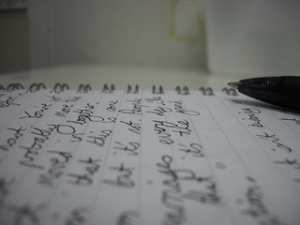
This is a very basic punctuation guide. It should help you with academic English and also English for general purposes.
-
Full stop/Period (.)
-
Comma (,)
-
Question Mark (?)
-
Exclamation mark (!)
-
Colon (:)
-
Semicolon (;)
Use this to end a basic statement.
“I am studying English.”
This is used to separate clauses, usually when there are no conjunctions (joining words such as ‘and’, ‘or’, ‘but’, ‘because’, and ‘so’ among others).
“The man I saw, so tall that he saw over everyone’s head, was not a handsome fellow.”
This includes the end clause of a tag question.
“You know this already, don’t you?”
It is also used to separate items in lists; there may be a comma separating a list item after ‘and’ in a list, called an Oxford comma, but it may also be left out.
“I went shopping for bread, milk, orange juice and toilet paper.”
This is used to end questions.
“What time did you get up?”
“Do you know the way to San Jose?”
“It’s morning, isn’t it?”
Think of this as an explosion. It’s strong. Never use this in academic writing unless it is part of a quote.
“Bloody hell! It’s freezing today.”
“Stop that now!”
This is used to precede lists or long quotes.
“There are three things I love: morning coffee, afternoon tea and a kiss goodnight.”
“In the text, Jones (2014) stated:
There are many different ways to study English, including many ways to study effectively. Unfortunately there are many more ways to study ineffectively, wasting both time and money.”
This is used to separate multiple-claused items in lists when a comma just isn’t enough.
“I bought the following things: a black leather jacket that was previously owned by the rock star Tony Iommi; a pair of heavy paratrooper boots; and a baby-pink Gibson Flying V electric guitar.”
It can also connect two slightly unrelated clauses (known as a non-sequitur).
“It was raining; she held her umbrella unfurled against the sky.”
I hope this is helpful. If so, why not share it with your friends?
